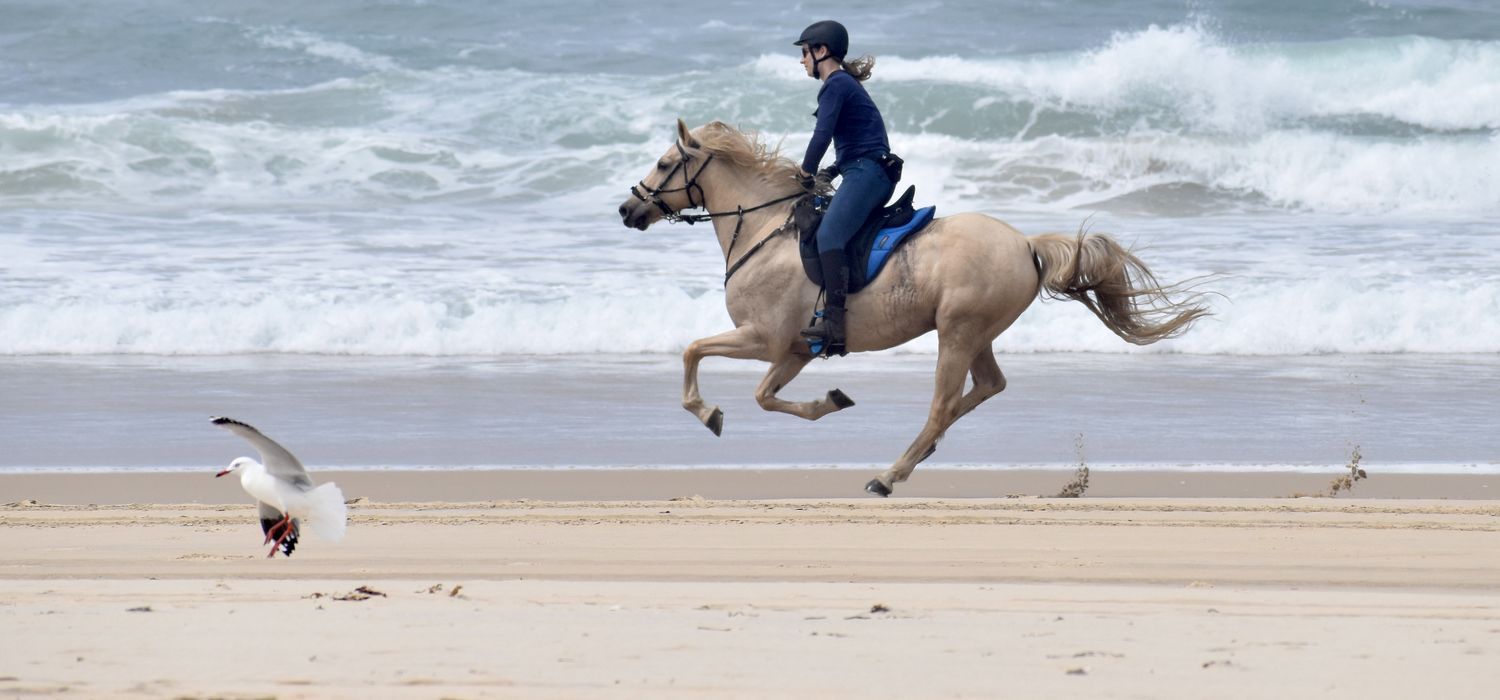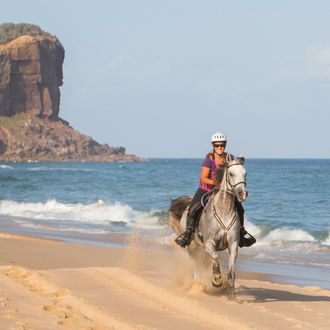Australia

Australia is a young nation in an ancient land. Some of the people have been here for over 60,000 years but a third of the population have arrived in the last sixty. This is the world's most urbanised country with 88% of people living in cities and towns. However, Australia is proud of its outback traditions and pioneering history. The Australian landscape is very diverse encompassing lush tropical rainforests but also an interior arid desert, snowy peaks and golden beaches. Although nearly as large as the US, Australia has less than a tenth of its population which leaves plenty of space for riding and there are many rights-of-way for horses in these scenic areas. Australia has some of the finest horses in the world and horseback is a wonderful way to see this magnificent country.
Read more…
The Australian Brumby is a unique horse and roams freely through rugged bush land and the harsh outback areas of Australia where they survive in extreme conditions. The largest numbers range freely throughout the Northern Territory, Queensland and northern Western Australia as these States contain the most undeveloped and least populated areas of Australia. The Brumby is the descendant of the first horses that came out on the ships from England with the convicts and first settlers. Only seven horses arrived with the first fleet in 1788 and these mares and stallions were sufficiently hardy to survive the voyage. They further evolved in the 1800′s by natural selection and survival of the fittest to endure the intense heat as well as the cold and snowy conditions of various parts of this diverse country.
The horses were versatile and later used as war-horses for the First and Second World Wars and the Boer War in South Africa as well as for mounts used in the gold rush days and as police horses. Their use as war-horses is testament to their good temperament, sure footedness and resilience. Horses from the Northern Tablelands of NSW were captured and bred from and these became known as Walers.
The roots of the Australian Stock Horse date back earlier than the Brumby with the arrival of the First Fleet in Botany Bay in January, 1788 when horses were first imported. Early imported horses include the Thoroughbred, Cape of Good Hope Horse (largely descended from the Barb and Spanish horse), Arabian, Timor Pony and Welsh Mountain pony. The horses in Australia were bred for their stamina and strength, with only the strongest allowed to breed on. In the 1830s, additional Thoroughbreds were imported into Australia to improve the local strains, and the mid-20th century the American Quarter Horse was introduced to the breeding. The Australian Stock Horse and the Waler horse come from similar roots, though today they are separate breeds. The "station horse" that was an ancestor of both breeds was used by the Australian Army in the First World War and was renowned for its toughness and endurance. However, the modern Australian Stock Horse differs from the Waler horse in that it is not as big. The horses shipped abroad to fight in war and kept at home to be bred on as Walers were the larger animals, as they were required to carry a rider with the considerable extra weight of weapons and a full pack. Some of the heaviest animals were also required pull water carts and carriages. However, the characteristics of toughness and endurance remain with the Australian Stock Horse of today.
The iconic kangaroo is unique to Australia and one of our most easily recognised mammals. Australia also supports at least 25,000 species of plants, compared to 17,500 in Europe including living fossils such as the Wollemi pine, the grass tree. There are over 12,000 species of brilliant wildflowers in Western Australia alone so there is plenty to see when riding a horse in Australia.
Refine Search
-
 Kerewong State Forest, NSWAustralia1 matching itineraryRiding trails through a mixture of hilly eucalyptus forests, gently undulating farmland, rocky escarpments, creek crossings and pockets of rainforest.View Ride
Kerewong State Forest, NSWAustralia1 matching itineraryRiding trails through a mixture of hilly eucalyptus forests, gently undulating farmland, rocky escarpments, creek crossings and pockets of rainforest.View Ride